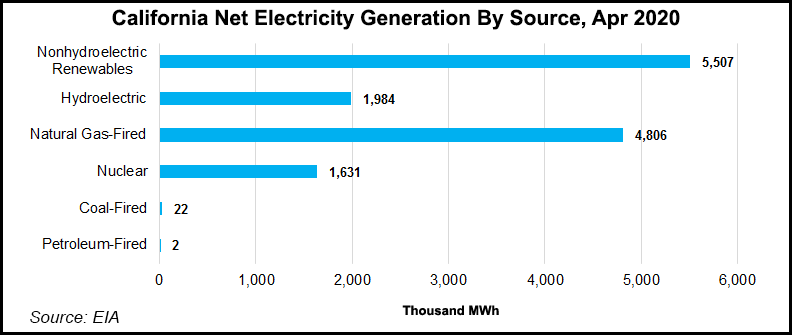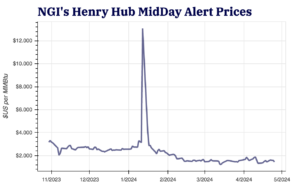Infrastructure | NGI All News Access
PG&E, Tesla Begin Work on Landmark Battery Storage Project in Northern California
Tesla Inc. and Pacific Gas and Electric Co. (PG&E) have begun construction of a 182.5 MW lithium-ion battery energy storage system (BESS) at the combination utility’s Moss Landing substation in Monterey County, CA.

The megapack system is considered a landmark in developing and deploying utility-scale batteries. In late 2018 California regulators approved plans for Moss Landing and replacing three PG&E gas-fired peakers. San Francisco County also approved the plans earlier this year.
The partners are designing, constructing and would maintain the BESS installation, with PG&E the owner and operator. Construction is expected to continue into early next year when the system would be energized and operational by mid-year.
The installation, near a former PG&E 1,000 MW gas-fired generation complex, would include 256 megapack battery units on 33 concrete slabs, each unit housing battery and power conversion equipment in a single cabinet. Transformers and switchgears also would be installed to connect the stored energy to a 115 kilovolt transmission line.
BESS would have the capacity to store and dispatch up to 730 MWh of energy to the grid at a maximum rate of 182.5 MW for up to four hours during periods of peak demand. PG&E said the contract with Tesla provides for expanding the capacity. Over the system’s estimated 20-year life, the project is expected to save more than $100 million.
The BESS would participate with the California Independent System Operator to serve as an operating reserve that could be dispatched quickly.
CAISO Vice President Mark Rothleder said energy storage was critical for the state to achieve its renewable energy goals. PG&E Senior Vice President Fong Wan noted that battery storage increasingly is “playing an integral role in enhancing overall electric grid efficiency and reliability. It integrates renewable resources while reducing reliance on fossil fuel [mostly natural gas] generation.”
Some analysts have for years predicted that with technological and price advantages, grid-based battery storage would begin cutting into the 6 Bcf/d of gas used for peaking plants. Earlier in July California energy officials confirmed that gas peaking plants were no longer favored.
© 2024 Natural Gas Intelligence. All rights reserved.
ISSN © 1532-1231 | ISSN © 2577-9877 |


